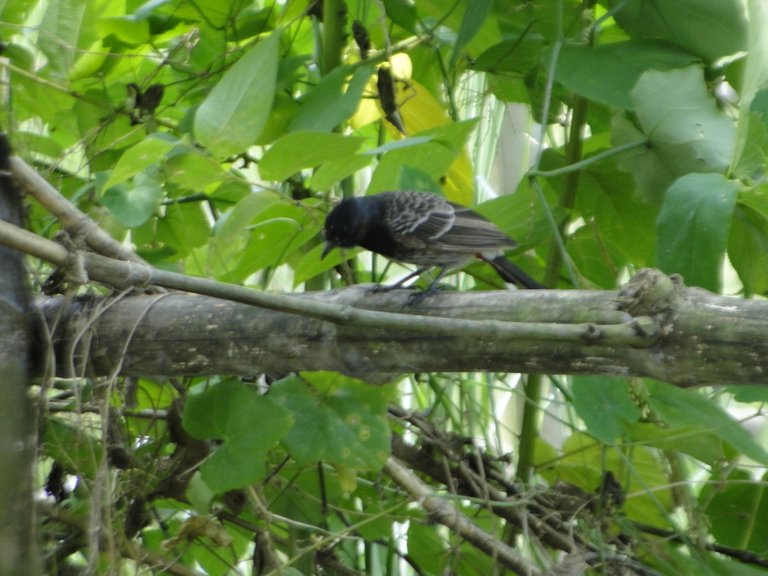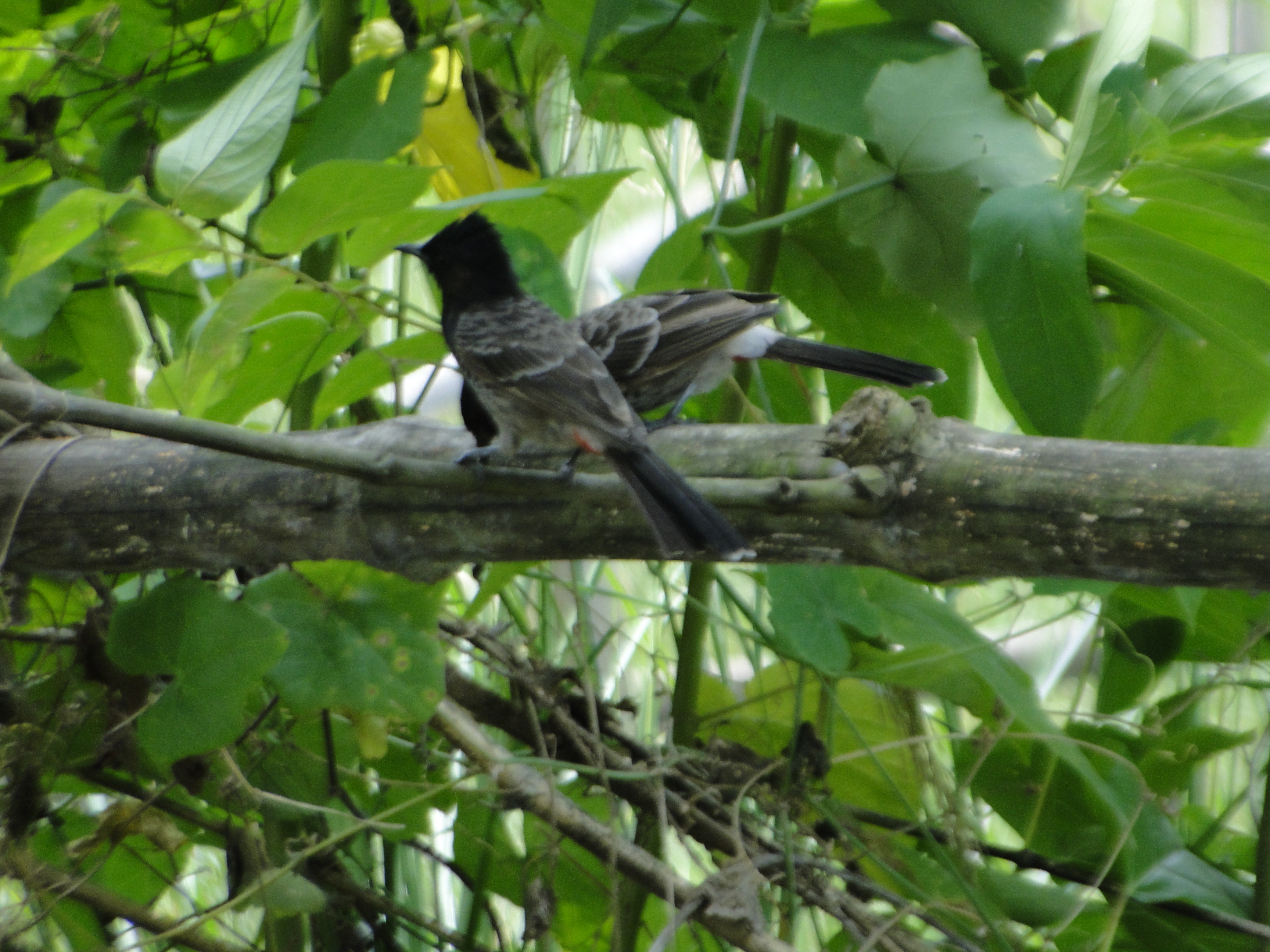Red-vented bulbul | Photography and Science
I saw two Red-vented bulbuls sitting on dead bamboo. This bird is a member of the bulbul family of passerines. You can easily recognize this bird by some structural features. Looking at its head, you will see it is square. You may think for a while that they are wearing crowns. Looking at its head is covered with black feathers. The body is mottled black and brown. Bulbul has a long tail that is easily visible. The vent is located under the tail and is red in color. This bird is named the Red-vented bulbul for the red color of the vent. Even its name is the same in our mother tongue.

Their habitat is open forest, and cultivated land or localities where there are trees. You will not find them in the deep forest. I found them in some orchards near the locality and near the crop fields. These birds live next to the farmers and collect their food from the crop fields. Red-vented bulbuls prefer insects. They also live by eating fruits, flower petals, etc. The red-vented bulbul nests near the crop fields as it is home to many insects.
The red-crested bulbul does not build its nest at high altitudes. They build their nests in bushes at a height of about 2-3 meters. They also build nests in holes in the ground. Abandoned houses are also considered as their shelter. They have been found living in a safe cave in a residential house.
They lay eggs and give birth to their young. The red-vented bulbul lays two or three eggs in a typical clutch. The color of their eggs is pale pink in color. The red-vented bulbul makes its nest out of small dry twigs and cobwebs. It takes about 14 days for their eggs to hatch. Both father bulbul and mother bulbul feed the chicks. Observations on them have shown that parent birds wait for their young to defecate while feeding their young. When children defecate, their parents swallow the faeces. But some days when the children are old enough, their parents take their faeces away and throw them away. Among birds such as the Pied Crested Cuckoo can be observed eating faeces. You can call them parasitic birds.
They call throughout the year and their calls are of different types. The calls of Red-vented bulbul are roosting call, begging, greeting, flight and alarm call. Through these calls they communicate with each other, begging for help and warning others. If you want to know more about this bird then click on this link.
Reference: https://en.wikipedia.org/wiki/Red-vented_bulbul
Thanks for reading
Best regards


Congratulations @momins! You have completed the following achievement on the Hive blockchain and have been rewarded with new badge(s):
Your next target is to reach 800 upvotes.
Your next target is to reach 900 comments.
You can view your badges on your board and compare yourself to others in the Ranking
If you no longer want to receive notifications, reply to this comment with the word
STOPTo support your work, I also upvoted your post!
Check out the last post from @hivebuzz:
Support the HiveBuzz project. Vote for our proposal!
Dear @momins,
May I ask you to review and support the Dev Marketing Proposal (https://peakd.com/me/proposals/232) we presented on Conference Day 1 at HiveFest?
The campaign aims to onboard new application developers to grow our ecosystem. If you missed the presentation, you can watch it on YouTube.
You cast your vote for the proposal on Peakd, Ecency, Hive.blog or using HiveSigner.
Thank you!
I support you, I did it
Thank you for your support @momins, really appreciate it! 👍
Thanks for your contribution to the STEMsocial community. Feel free to join us on discord to get to know the rest of us!
Please consider delegating to the @stemsocial account (85% of the curation rewards are returned).
You may also include @stemsocial as a beneficiary of the rewards of this post to get a stronger support.